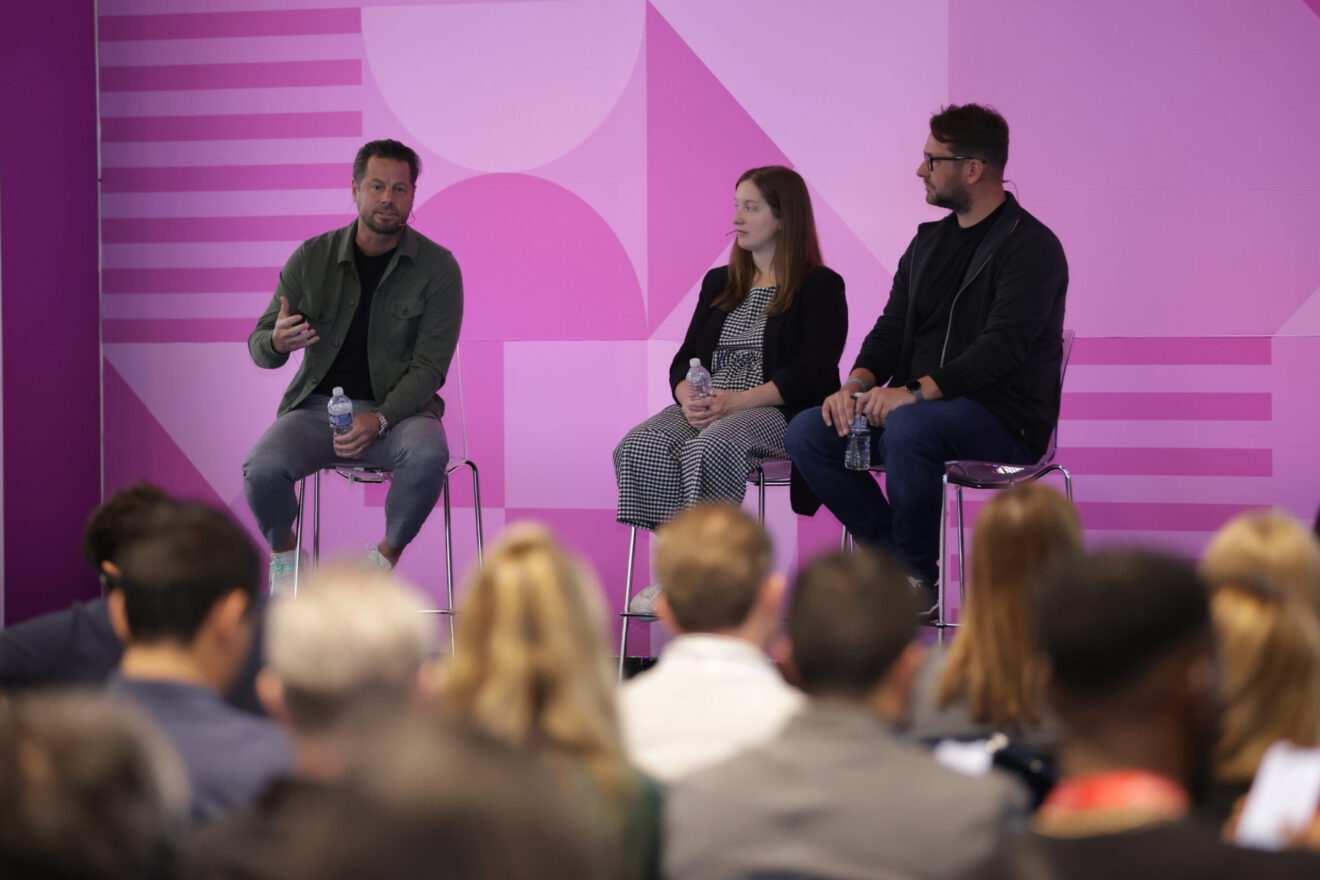Sign up for Restaurant SmartBrief today, free.
The ever-expanding array of technology tools that aim to streamline, speed up and otherwise enhance restaurant operations was on display this past weekend at the National Restaurant Association Show in Chicago, which continues through Tuesday. Restaurant operators and representatives from tech companies discussed the benefits of ordering kiosks, artificial intelligence-driven marketing assistants and more, and many seemed to agree that while these tools can reduce labor, they still need to be paired with the human touch.
Guests want automation and interaction
Automated ordering technology has swept the restaurant industry in the last few years. The pandemic spurred many restaurants to add QR codes for touchless ordering and kiosks to save on labor costs, and both have remained regular features at many eateries. Customers order via Square kiosks at Utah-based fast-casual chicken chain Pretty Bird, and the touchscreens meld with the restaurants’ clean, modern aesthetic, which co-owner Alexis Furkioti Pham likened to that of an Apple store while speaking on a panel during a session called “Technology That Helps You Do More with Less.”
Diners are growing increasingly accustomed to dealing with technology in restaurants, and many prefer it in some instances. Nearly three-quarters (73%) of consumers said they prefer automation over live staff members in at least one area of a business, according to Square’s 2023 Future of Commerce report.
“Restaurants need to meet the diners where they’re at – how they want to order, how they want to be served – and a lot of the way that’s going to happen is through technology,” Square’s Head of Partnerships for Food & Beverage Jane Hong said during the panel discussion.
Thirty-eight percent of consumers surveyed said they prefer automated ordering to ordering from a staff member, suggesting that the majority of diners still like to interact with staffers when placing their order.
Furkioti Pham has seen this dynamic play out at Pretty Bird. “Customers still want to see that engagement with the staff,” she said, noting that Pretty Bird staffers are encouraged to explain the menu to customers during the ordering process and help out those who may have trouble figuring out how to use the kiosks.
Training team members on this part of the job has proven to be more difficult than the tech training, since many of Pretty Bird’s employees are members of the tech-savvy Generation Z.
“They are totally into technology. They live on their phones,” Furkioti Pham said. “So, they’re really easily trained at the restaurant to learn our technology…The difficult part is getting them out there to talk to the customers. But they’re getting out there, we’re pushing them.”
AI can boost the reach of restaurants’ stories
AI is a hot topic at the National Restaurant Association Show this year, and restaurant technology company PopMenu spoke about its newly-released feature that uses ChatGPT to generate marketing materials in a session called “Demystifying Marketing: Tech Hacks to Grow Sales and Pinpoint What’s Working.”
The tool uses restaurants’ guest data and information about previous marketing campaigns to create digital marketing campaigns. Using generative AI to produce marketing content for email, text and social media has the potential to save restaurant operators time and help them double down on what’s working, but the technology still needs human guidance to work to its full potential.
“ChatGPT is helping people write more and more content, but that’s going to mean lots of generic content,” PopMenu co-founder and CEO Brendan Sweeney said during the session.
Half of restaurants have already adopted or plan to adopt AI for marketing purposes, according to a 2023 survey conducted by PopMenu. Using personalized data will be key to standing out in a sea of homogenous marketing messaging generated by ChatGPT, Sweeney said.
For Kat Johnson, director of marketing and communications at Chai Pani Restaurant Group, based in Asheville, N.C., AI-driven marketing is a tool to help the company’s brands connect with customers. She can input information about the restaurants’ menus and events, and ChatGPT generates marketing messaging for various platforms. Reporting dashboards provide insights into campaign performance, down to how many orders resulted from a specific email. The system suggests content designed to resonate with the brands’ followers based on their past engagement, and Johnson stressed that the content is just that – a suggestion. Using AI-generated content means that restaurant operators need to use their skills as editors to make sure the content is true to the brand and tells a unique story, she said.
“The way I think about my job is that it breaks down to storytelling and strategy. And when I’m able to use a tool like PopMenu to really streamline the strategy…I can focus more on the storytelling side of things.”
Read more like this from SmartBrief:
- Off-premises dining will continue to help restaurants grow in 2023
- Automation elevates on-demand foodservice options
- Delivery services set their sights on autonomous tech
________________________________________________
If you liked this article, sign up for SmartBrief’s free email newsletter from the National Restaurant Association. It’s among SmartBrief’s more than 250 industry-focused newsletters.
